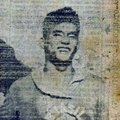
Masayuki Fukasawa
@masayukifukasawaBorn on November 22, 1965, in Numazu City, Shizuoka Prefecture, Japan. In 1992, he went to Brazil for the first time and worked as an intern at Paulista Shimbun (Japanese newspaper in Brazil). In 1995, he went back to Japan and worked with Brazilians at a factory in Oizumi-machi, Gunma Prefecture. He wrote a book, Parallel World (Ushio Publishing) about his experiences there and received Ushio Nonfiction Award in 1999. He returned to Brazil in 1999. Beginning in 2001, he worked at Nikkey Shimbun and became the editor-in-chief in 2004. He has been an editor-in-chief of Diário Brasil Nippou since 2022.
Updated January 2022
Stories from This Author
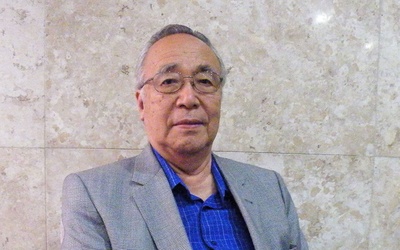
Toshihiko Tarama, the man known as the "Showa era's descendant of the heavenly grandson" - A tale of a nobleman's wanderings on the other side of the world - Part 1
May 19, 2015 • Masayuki Fukasawa
While studying the history of performing arts and Japanese literature, folklorist Orikuchi Shinobu proposed the concept of "tales of the wandering nobleman" as the prototype of narrative literature in Japan. The story is about someone of high status, such as royalty or aristocrat, being abandoned for some reason and forced to leave their home, being placed in unfortunate circumstances or on the lower world, where they go on journeys and adventures to demonstrate their righteousness or some kind of power. …
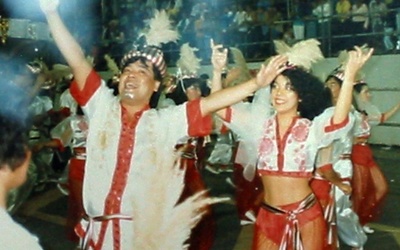
Carnival and Japanese Immigrants: Foreign Culture in Brazilian Folklore, Part 2
Feb. 6, 2015 • Masayuki Fukasawa
Read Part 1 >> The first time Japanese immigration is the topic Japanese immigrants, who had kept their distance from Carnival, were first chosen as the theme of the parade in 1983 by the Escola "Barroca Zona Sul" in the city of São Paulo. At the time, they were the top-ranking special group, and paraded to the theme song "75 Years of Immigration or the Land of the Rising Sun," placing sixth out of ten teams. At that time, they …
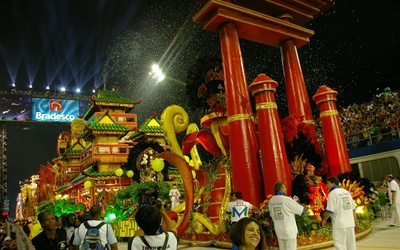
Carnival and Japanese Immigrants: The Incorporation of Foreign Cultures into Brazilian Folklore, Part 1
Feb. 5, 2015 • Masayuki Fukasawa
In the first place, there is a common understanding among Brazilians that nothing could be more incompatible than "Japonês" (Japanese) and "samba." For example, the author played percussion in several samba teams in the city of Sao Paulo for about 10 years, and felt frustrated when he heard a sambista (samba player) say "Japonês entrou no samba" (a Japanese has entered the samba) when the music was out of sync. At first, he assumed that they were talking about him, …
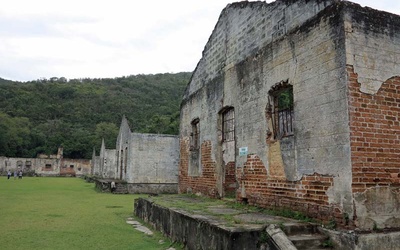
Prison Island Anchieta: The Site of Numerous Tragedies—“Winning or Losing Feud” Resulted in Imprisonment of 170 People; Water Source Named Bica Shindo Renmei
Jan. 19, 2015 • Masayuki Fukasawa
A federal prison was built on Alcatraz Island in California, in the United States, which became known as the impossible-to-break “prison island” and was later featured in the movie Escape from Alcatraz (made in 1979 and directed by Don Siegel) starring Clint Eastwood. There is in fact a Brazilian version of the facility on Anchieta Island located on the Northeastern coast of Sao Paulo, which holds the hidden history of 170 imprisoned Japanese immigrants in the immediate aftermath of the …
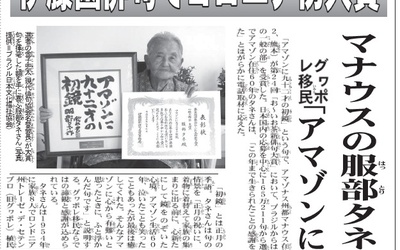
"Let's cultivate the country of haiku by working in the fields" The spread of haiku culture in Brazil - Takahama Kyoshi and immigrant Sato Nenpaku - Part 2
Dec. 5, 2014 • Masayuki Fukasawa
Read Part 1 >> It heals the turbulent world caused by the fight to win or lose, and spreads to the masses. In November 1948, after the end of the war, in the midst of the Japanese community being divided by the struggle for victory and defeat, the monthly haiku magazine "Kage" (Shade of Trees), published by the Hototogisu school and presided over by Nenpuku, was launched in the city of São Paulo. The opening page of the first issue …
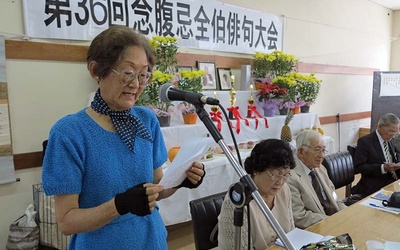
"Let's cultivate the country of haiku by working in the fields" The spread of haiku culture in Brazil - Takahama Kyoshi and immigrant Sato Nenpaku - Part 1
Dec. 4, 2014 • Masayuki Fukasawa
Haiku that crossed the ocean with immigrants When Professor Hosokawa Shuhei (International Research Center for Japanese Studies), who won the Yomiuri Literature Prize in 2009 for his book Tooku arite tsukuroku (What We Make in the Distance) (Misuzu Shobo), an interpretation of Brazilian immigrant literature, gave a lecture here, he said, "I hear that Western newspapers do not generally have literary pages that publish works submitted by citizens. But literary sections exist in Japanese newspapers, and even in Japanese-language newspapers …
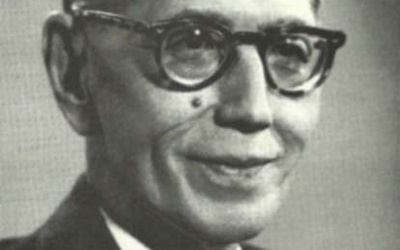
Kiyoshi Yamamoto and the Japanese Pavilion in Sao Paulo - His Unknown Connection with Ryunosuke Akutagawa
Oct. 29, 2014 • Masayuki Fukasawa
The Japanese Pavilion in Ibirapuera Park, known as the "Central Park of São Paulo," held a ceremony to celebrate its 60th anniversary on August 29th, welcoming the 15th head of the Urasenke school of tea ceremony, Sen Genshitsu, and others from Japan. The building was designed to resemble the Katsura Imperial Villa, and is rare in the world as a "purely Japanese" building, with pillars, roofing tiles, and even gravel brought from Japan. The Japan Pavilion embodies the universality of …

Taste of Hometown Brought Overseas: The Localization of Immigrants and Their Traditional Dishes
Sept. 5, 2014 • Masayuki Fukasawa
“Italian” sausage not eaten by Italians “Italian people do not eat our Mortadella (Bologna sausage).” I remember clearly a sense of disappointment in his voice in the interview I conducted with the one and only, hardcore Italian-Brazilian president Mario Benedetti (third generation, age 56 at the time) back in 2010. What’s “hardcore” about him is the fact that despite being third generation, he speaks Italian at home, has kids (fourth generation) who are also fluent in the language, and holds …
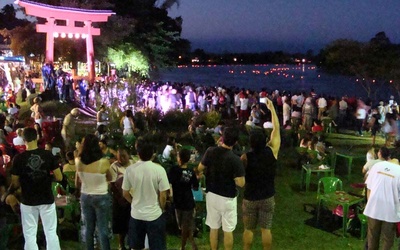
The Meiji era leader's dream of rice cultivation in Brazil (the three colonies of Katsura, Registro, and Sete Barras)
Aug. 11, 2014 • Masayuki Fukasawa
How a single metal plate changed the fate of Japanese immigrants During the June and July 2017 FIFA World Cup in Brazil, nearly 10,000 Japanese spectators came to watch. Almost none of them visited this important site, but it is one that Japanese people who are interested in Meiji-period history should not miss.The Iguape Municipal History Museum (Museu Municipal de Iguape) is located 202 km southwest of Sao Paulo. A metal plate is on display unobtrusively on the second floor …
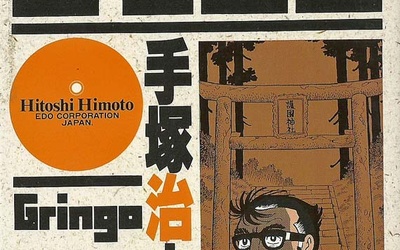
Tezuka Osamu's final work "Gringo" - Trying to solve the mystery of the genius's posthumous work - Set in the Japanese community in Brazil
July 7, 2014 • Masayuki Fukasawa
There is no Japanese person who does not know of the genius manga artist Osamu Tezuka (1928-1989), who released a succession of masterpieces such as "Phoenix" and "Black Jack," and was called the "God of Manga" even while he was alive. However, few people know that his unfinished final work, "Gringo," was modeled on the Japanese community in Brazil.The word "Brazil" does not appear even once in this work. Nevertheless, how do we know that the story is set in …
 We’re looking for stories like yours!
Submit your article, essay, fiction, or poetry to be included in our archive of global Nikkei stories.
Learn More
We’re looking for stories like yours!
Submit your article, essay, fiction, or poetry to be included in our archive of global Nikkei stories.
Learn More
New Site Design
See exciting new changes to Discover Nikkei. Find out what’s new and what’s coming soon! Learn More
Discover Nikkei Updates

Baachan, grandpa, tía, irmão… what does Nikkei family mean to you? Submit your story!






